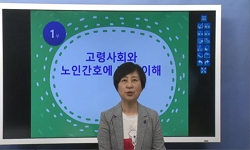Due to a waste of energy in korea, about 525,000 which are 75 percent of total buildings are at least 15 years old buildings that need remodeling. There are two current remodeling systems. One is a remodeling system to reduce a waste of resources from...
http://chineseinput.net/에서 pinyin(병음)방식으로 중국어를 변환할 수 있습니다.
변환된 중국어를 복사하여 사용하시면 됩니다.
- 中文 을 입력하시려면 zhongwen을 입력하시고 space를누르시면됩니다.
- 北京 을 입력하시려면 beijing을 입력하시고 space를 누르시면 됩니다.
https://www.riss.kr/link?id=A105233091
- 저자
- 발행기관
- 학술지명
- 권호사항
-
발행연도
2018
-
작성언어
Korean
- 주제어
-
KDC
540
-
등재정보
KCI우수등재,SCOPUS
-
자료형태
학술저널
- 발행기관 URL
-
수록면
23-34(12쪽)
- 제공처
- 소장기관
-
0
상세조회 -
0
다운로드
부가정보
다국어 초록 (Multilingual Abstract)
Due to a waste of energy in korea, about 525,000 which are 75 percent of total buildings are at least 15 years old buildings that need remodeling. There are two current remodeling systems. One is a remodeling system to reduce a waste of resources from the reconstruction. The other is a green-remodeling system aimed to energy savings and reducing environmental costs. This study is to analyze quantitatively these current systems with respect to the cost-benefit caused by the life cycle and suggests the political and institutional implications through the interpretation of the results. For a quantitative analysis, we analyzed reducing maintenance costs and rent benefits with simulation by using opportunity costs, construction costs, plan costs and supervision costs as expense variables and using the reduced floor area ratio, institutional incentives, energy, water resources and certified emission reduction(CER) as benefit variables. As a result of the empirical study, the green-modeling was more beneficial in the field of environment such as the energy savings, however, the final benefits of remodeling which has no green building certification costs but more floor area ratio incentives were more economical. The green-remodeling system focused on reducing environmental costs and energy savings needs a equatable institutional incentive system.
목차 (Table of Contents)
- Abstract
- 1. 서론
- 2. 제도 및 선행연구 검토
- 3. 분석틀 설정
- 4. 비용과 편익 실증 분석
- Abstract
- 1. 서론
- 2. 제도 및 선행연구 검토
- 3. 분석틀 설정
- 4. 비용과 편익 실증 분석
- 5. 결론
- REFERENCES
동일학술지(권/호) 다른 논문
-
스마트폰 보행이동 데이터를 활용한 노인의 역세권 이용실태 분석
- 대한건축학회
- 이선재(Lee, Sunjae)
- 2018
- KCI우수등재,SCOPUS
-
고령친화도시 조성을 위한 물리적 안전요소 평가에 대한 연구
- 대한건축학회
- 박종용(Park, Jong-Young)
- 2018
- KCI우수등재,SCOPUS
-
- 대한건축학회
- 김도연(Kim, Do-yeon)
- 2018
- KCI우수등재,SCOPUS
-
- 대한건축학회
- 정인아(Jung In-A)
- 2018
- KCI우수등재,SCOPUS







 DBpia
DBpia







